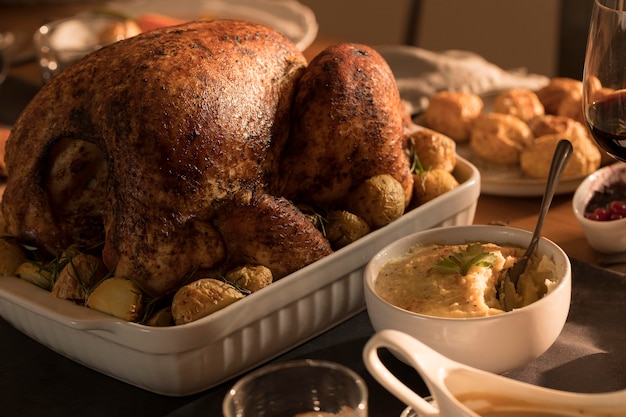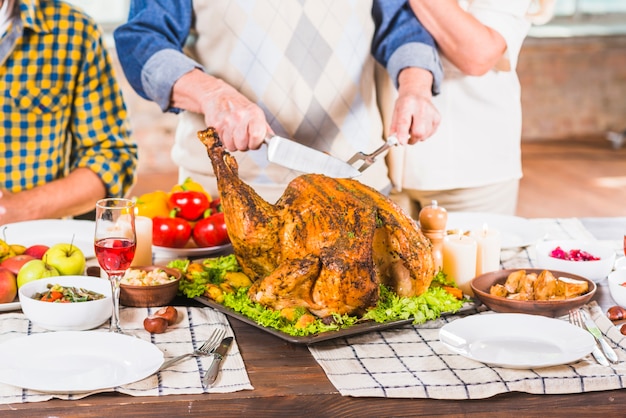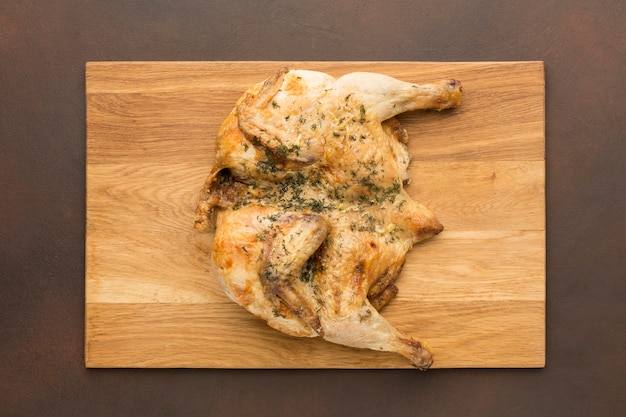There’s something about turkey wings that just screams comfort food. Maybe it’s the succulent meat, the crispy skin, or the fact that they’re so darn versatile. Whatever it is, I’m a huge fan. And when it comes to cooking them in the oven, 375°F is my go-to temperature. It’s that sweet spot where the skin gets gloriously golden and the meat stays juicy and tender.
I’m not just throwing out a random temperature here, folks. This is based on years of experience in the kitchen, countless turkey wing experiments, and a whole lot of trial and error. In this guide, we’ll dive into everything you need to know about cooking turkey wings at 375°F, from prepping and cooking to serving and storing. We’ll even explore some exciting flavour variations and offer some pro-level tips that’ll elevate your turkey wing game.
(Part 1) Turkey Wings: A Culinary Treasure

Let’s start with the basics, shall we? Understanding the magic of turkey wings is essential to unlocking their full potential. Those glorious sections of the bird are packed with flavour and versatility, making them a fantastic choice for any occasion.
Anatomy of a Turkey Wing
Before we dive into cooking, let’s break down the anatomy of a turkey wing. A whole turkey wing is divided into two main sections: the drumette (the upper part) and the wing (the lower part).
- Drumette: This is the thicker and meatier part of the wing, resembling a drumstick. It’s known for its tender, juicy flesh and a generous amount of skin.
- Wing: This section is longer and thinner than the drumette, and often contains a bit more cartilage. It’s still flavorful, though, and can be cooked in the same way as the drumette.
Choosing the Right Wings
The beauty of turkey wings is their versatility. You can choose from:
- Whole Wings: These are the classic choice, offering a good mix of meat and skin. They’re perfect for roasting, braising, or grilling.
- Drumsticks: If you’re after a meatier, finger-licking experience, drumsticks are the way to go. They’re fantastic for appetizers or as part of a larger meal.
- Individual Sections: You can find just the drumette or the wing, which are ideal for smaller meals or appetizers.
Whether you go for fresh or frozen wings, ensure they’re thawed completely before cooking. This ensures even cooking and prevents a raw center.
Prepping Your Turkey Wings: The Art of Flavor
Here’s where the fun really begins. The key to mouthwatering turkey wings is a little prep work.
- Washing: A good wash is essential to remove any residue. Rinse the wings under cold water, making sure to pat them dry with paper towels afterward. This helps the skin crisp up beautifully during cooking.
- Seasoning: Now for the fun part - flavour! There’s no right or wrong here, just experiment with what you like. I always start with the classics: salt, pepper, garlic powder, onion powder, and paprika. Then, I add herbs like thyme, rosemary, or oregano, depending on the flavour profile I’m aiming for.
- Marinades: For even more intense flavour, try a marinade. A simple brine of salt, pepper, and water is a great starting point. You can also get creative with citrus juices, spices, and herbs. Let the wings marinate for a couple of hours in the fridge before cooking.
(Part 2) The oven method: Cooking at 375°F

Now, let’s get down to the nitty-gritty – cooking those turkey wings in the oven. 375°F is my magic number, folks. It’s hot enough to create that beautiful, crispy skin without drying out the meat. It’s all about finding that perfect balance.
Equipment and Preparation
Before you start, ensure you have the right equipment.
- Baking Sheet or roasting pan: Choose a pan that’s large enough to hold the wings in a single layer. This ensures even cooking and prevents overcrowding, which can lead to steam buildup and soggy skin.
- Wire Rack: Place a wire rack inside the pan. This allows air to circulate around the wings, helping them cook evenly and achieve that perfect crispy skin.
Oven Time: A Guide to Doneness
Here’s the crucial part: oven time will vary depending on the size of the wings.
- Small Wings: 45-60 minutes
- Large Wings: 60-90 minutes
Don’t rely on guesswork. Use a meat thermometer inserted into the thickest part of the wing, ensuring it doesn’t touch any bone. The internal temperature should reach at least 165°F for safe consumption.
Tips for Achieving Perfection
Here are some insider tips to make your turkey wings truly spectacular:
- Basting: For extra moisture and flavor, baste the wings every 15-20 minutes with butter, broth, or a simple mixture of water and lemon juice. This helps to keep the meat tender and prevents the skin from drying out.
- Roasting Vegetables: Why not create a complete meal on one pan? Add some vegetables like potatoes, carrots, or onions to the baking sheet alongside the wings. They’ll soak up the delicious drippings and create a hearty side dish.
- Resting Time: Don’t rush the process! Allow those wings to rest for 10-15 minutes before carving and serving. This gives the juices a chance to redistribute, resulting in extra tender and flavorful meat.
(Part 3) Flavour Combinations: Beyond the Basics

Now that you’ve mastered the oven method, it’s time to explore some exciting flavour variations. The possibilities are endless, and every combination adds a unique dimension to the dish.
Spicy Turkey Wings: A Kick of Heat
For those who love a little spice, try a fiery rub. Combine chili powder, paprika, cayenne pepper, garlic powder, and onion powder. Or, take it up a notch with a spicy glaze made with hot sauce, honey, and brown sugar. The sweet and spicy combo is a real crowd-pleaser.
Sweet and Savoury: The Perfect Balance
This is a personal favourite of mine. A simple glaze of honey, soy sauce, and ginger creates a harmonious blend of sweet and savoury. Add a little bit of orange juice or zest for a touch of citrusy brightness. The result is a flavour explosion that will have you licking your fingers.
Herbed Turkey Wings: A Touch of Freshness
Fresh herbs are an essential element for any great dish, and turkey wings are no exception. A classic blend of thyme, rosemary, oregano, and sage will create a comforting and familiar flavour. For a more unique twist, try tarragon or chives.
Beyond Roasting: Exploring Other Cooking Methods
Turkey wings are incredibly versatile. They’re not just for roasting.
- Soups and Stews: Their rich flavour makes them perfect for adding depth to hearty soups and stews.
- Casseroles: Use cooked turkey wings to create a filling and satisfying casserole.
- Grilled: For a smoky flavour, try grilling your turkey wings. Simply marinate them, then cook over medium heat, turning occasionally, until they’re cooked through and the skin is crispy.
(Part 4) The Importance of Doneness and Safety
food safety is paramount, and there’s no room for guesswork when it comes to cooking poultry. Ensure those wings are cooked all the way through to prevent any foodborne illnesses.
Meat Thermometer: Your Ultimate Tool
Don’t rely on visual cues alone. A meat thermometer is your best friend. Insert it into the thickest part of the wing, making sure it doesn’t touch any bone. The internal temperature should reach 165°F.
Visual Cues: Signs of Doneness
While a thermometer is essential, keep an eye out for these visual indicators:
- Cooked Through: The wings should be cooked evenly, with no pink remaining in the center.
- Clear Juices: When you pierce the meat with a fork, the juices should run clear, not pink.
- Golden Brown Skin: The skin should be a beautiful golden brown, indicating that it’s crispy and cooked properly.
Food Safety: Protecting Yourself and Your Family
Follow these simple steps to ensure food safety:
- Wash Your Hands: Always wash your hands thoroughly with soap and water before and after handling raw poultry.
- Separate Raw Meat: Keep raw turkey wings separate from other foods in your refrigerator to prevent cross-contamination.
- Cook Thoroughly: Always cook your turkey wings to an internal temperature of 165°F.
- Refrigerate Leftovers Promptly: Store any leftover turkey wings in the refrigerator within two hours of cooking.
(Part 5) Serving and Presentation: The Final Touches
You’ve worked hard to create a delicious meal, so now it’s time to present those turkey wings with pride.
Carving and Serving
For whole wings, use a sharp knife to cut them at the joint, separating the drumette from the wing. You can serve them whole or cut into smaller pieces for easier eating.
If you’re serving drumsticks, simply pull the meat off the bone using a fork. They’re perfect for finger food, so don’t be afraid to get messy!
side dishes: Completing the Feast
Turkey wings are incredibly versatile, so you have many side dish options.
- Starchy Sides: Potato mash, baked potatoes, or even a simple rice pilaf are perfect for soaking up the delicious drippings.
- Roasted Vegetables: As mentioned earlier, roasting vegetables on the same pan as the wings is a fantastic option for a complete meal.
- Salads: A fresh salad balances the richness of the turkey wings and adds a refreshing touch.
Presentation Matters: Elevate Your Meal
Take your serving game to the next level with a beautiful presentation.
- Rustic Wooden Board: A rustic wooden board is a great option for serving turkey wings, especially if you’re aiming for a casual, cozy vibe.
- Napkins: Place a bowl of napkins nearby for easy cleanup.
- Lemon Wedges and Toothpicks: These are essential for easy eating, especially when serving whole wings.
(Part 6) Tips and Tricks from a Pro: Master Your Craft
Now, let’s dive into some insider tips and tricks that will make your turkey wings even better.
The Secret to Crispy Skin: Unlocking Flavor
Crispy turkey skin is a must-have! Here’s my secret: pat the wings dry with paper towels before cooking. This helps the skin crisp up beautifully. You can also brush them with a little bit of oil to enhance the browning.
Making the Most of Leftovers: No Waste Allowed
Don’t let those delicious turkey wings go to waste! Here are some ideas for using leftovers:
- Sandwiches: Slice the meat and create a hearty sandwich with your favorite toppings.
- Salads: Add shredded turkey wing meat to your salads for extra protein and flavor.
- Soup: Turkey wings are excellent for adding depth to soups and stews.
You can refrigerate cooked turkey wings for up to 3 days or freeze them for longer storage.
Experimentation: Embrace the culinary journey
Don’t be afraid to experiment with different flavours and techniques. Try different seasonings, marinades, glazes, and even add other ingredients, such as apples, pears, or even a few slices of bacon. The possibilities are endless!
(Part 7) FAQs: Everything You Need to Know
Q: How long do turkey wings take to cook at 375°F?
A: The cooking time depends on the size of the wings. Small wings take about 45-60 minutes, while larger wings can take 60-90 minutes. Always use a meat thermometer to ensure they’re cooked to an internal temperature of 165°F.
Q: Can I cook turkey wings in a slow cooker?
A: Absolutely! Slow cookers are a great option for tender and juicy turkey wings. Set the slow cooker to low and cook for 6-8 hours, or until the meat is falling off the bone.
Q: What are some good side dishes for turkey wings?
A: Potato mash, roasted vegetables, green beans, corn on the cob, and a simple salad are all great options.
Q: Can I freeze cooked turkey wings?
A: Yes, you can. Just make sure they’re cooled completely before storing in freezer-safe bags or containers. They’ll stay good in the freezer for up to 3 months.
Q: How do I know if turkey wings are done?
A: The best way to check for doneness is with a meat thermometer. The internal temperature should reach 165°F. The wings should also be cooked through, the juices should run clear, and the skin should be golden brown.
(Part 8) Final Thoughts: A Recipe for Success
Now you’ve got the knowledge, the tips, and the tricks to create delicious turkey wings that will impress your family and friends. Remember, cooking is a journey of exploration and experimentation. Don’t be afraid to try new things, and have fun with it! Enjoy the process, and let the wonderful aromas of turkey wings fill your kitchen.
Happy cooking!
Everyone is watching

Corn on the Cob: The Ultimate Guide to Perfectly Cooked Ears
Healthy MealsAh, corn on the cob. Just the name evokes images of sunny days, barbecues, and that sweet, juicy flavour that ...

Perfect Pork Roast Oven Cooking Time: A Guide to Delicious Results
Healthy MealsThere's something truly satisfying about a perfectly roasted pork. The aroma alone is enough to make your mout...

Ham Cooking Time: How Long to Bake, Smoke, or Boil a Delicious Ham
Healthy MealsAh, ham. It's a classic, isn't it? A real crowd-pleaser, especially around holidays. And when done right, it'...

Scallops: The Ultimate Guide to Perfect Cooking
Healthy MealsAh, scallops. Those delicate, sweet, and utterly delicious morsels of the sea. They hold a special place in my...

Spaghetti Squash: The Ultimate Guide to Cooking and Serving
Healthy MealsRemember that time you saw spaghetti squash at the supermarket, looking all bumpy and strange, and thought, "W...
